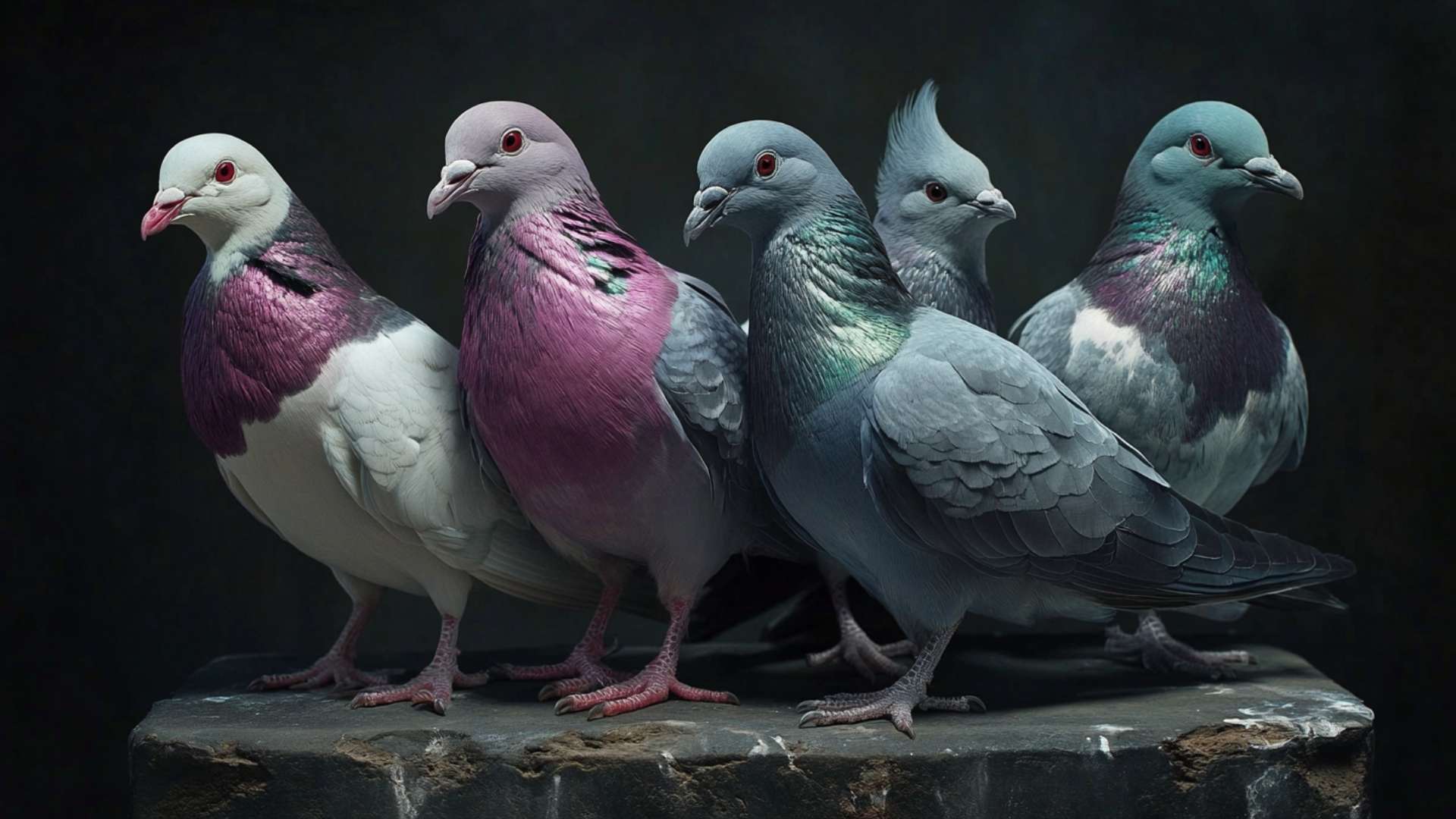Pigeons have long been regarded as fascinating creatures, captivating the attention of bird enthusiasts and urban dwellers alike. With their unique traits and behaviors, pigeons offer a delightful opportunity to observe nature up close. Attracting these feathered friends to your backyard can be a rewarding experience that allows you to gain insight into their social dynamics and daily routines.
The Peculiar Charm of Pigeons
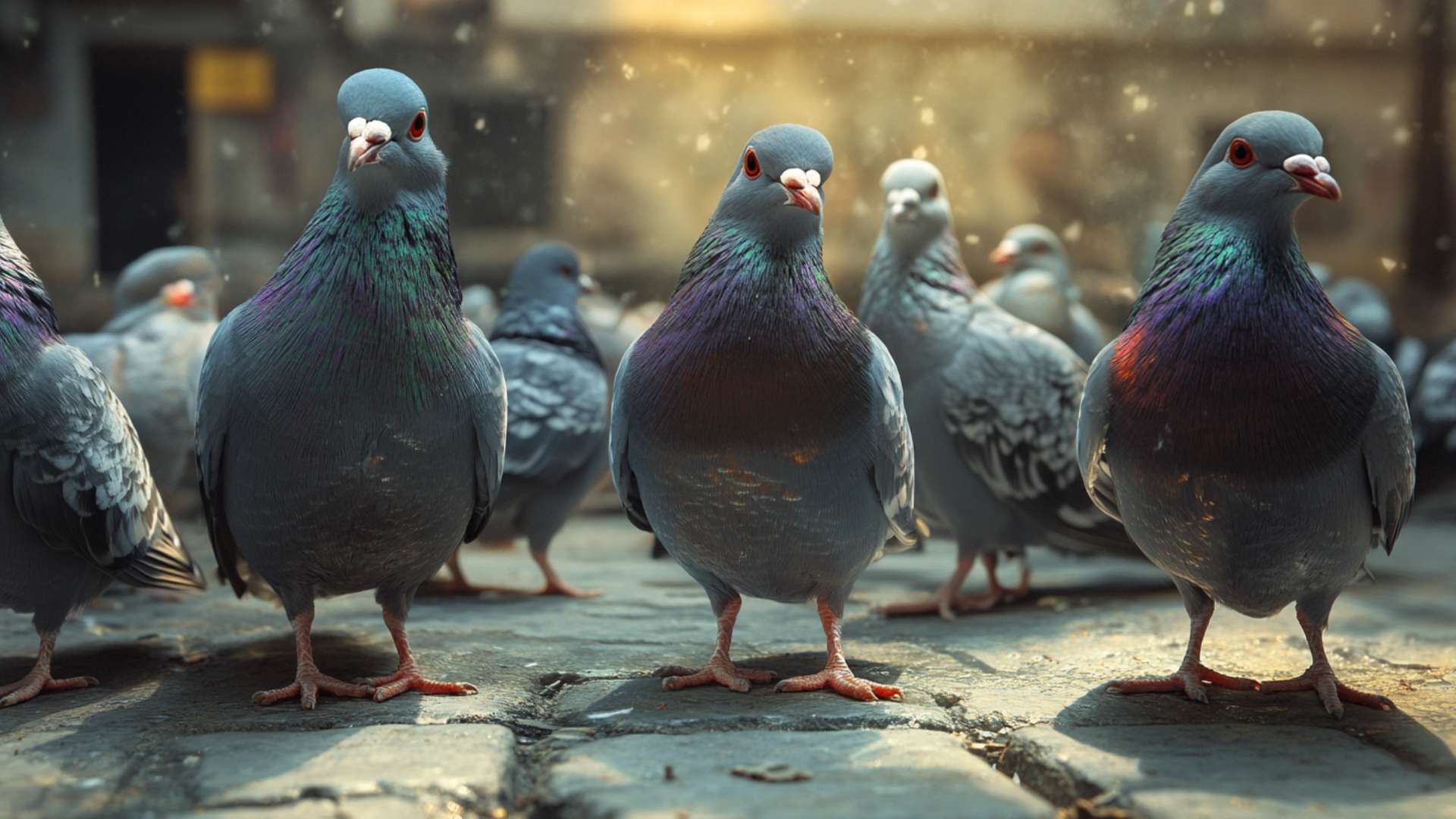
Pigeons, scientifically known as Columba livia domestica, belong to the same family as doves. Their distinct features include plump bodies, small heads with bright eyes, and beautiful patterns on their feathers. These birds possess an innate ability to navigate long distances using their remarkable homing instinct.
They are highly adaptable creatures that have thrived in various environments across the globe. One of the most intriguing aspects of pigeons is their social behavior.
These sociable birds form close-knit flocks or “teams” where they communicate through soft cooing sounds and head-bobbing gestures. They exhibit strong attachments to their mates and flock members, displaying loyalty and cooperation in their daily lives.
The Joy of Attracting Pigeons
Attracting pigeons to your surroundings can bring immense joy and wonderment. Creating an inviting environment that entices these birds not only offers a unique opportunity for observation but also fosters a deeper appreciation for nature’s intricacies. Feeding pigeons can be an enjoyable activity that allows you to establish a connection with these wild avian companions.
Observing their feeding habits, such as picking grains or seeds from the ground or pecking at homemade pigeon feed recipes sprinkled on ledges or platforms can be both entertaining and educational. Beyond feeding them, witnessing pigeons interact with one another is a sight to behold.
From courtship displays, where males puff their chests and bow to females, to watching them care for their young ones in cozy nests tucked away in corners or rooftops, the daily lives of pigeons are filled with touching moments. By attracting pigeons to your vicinity, you open a window into an enchanting world where these remarkable creatures offer an abundance of delight and insight.
Understanding Pigeon Behavior
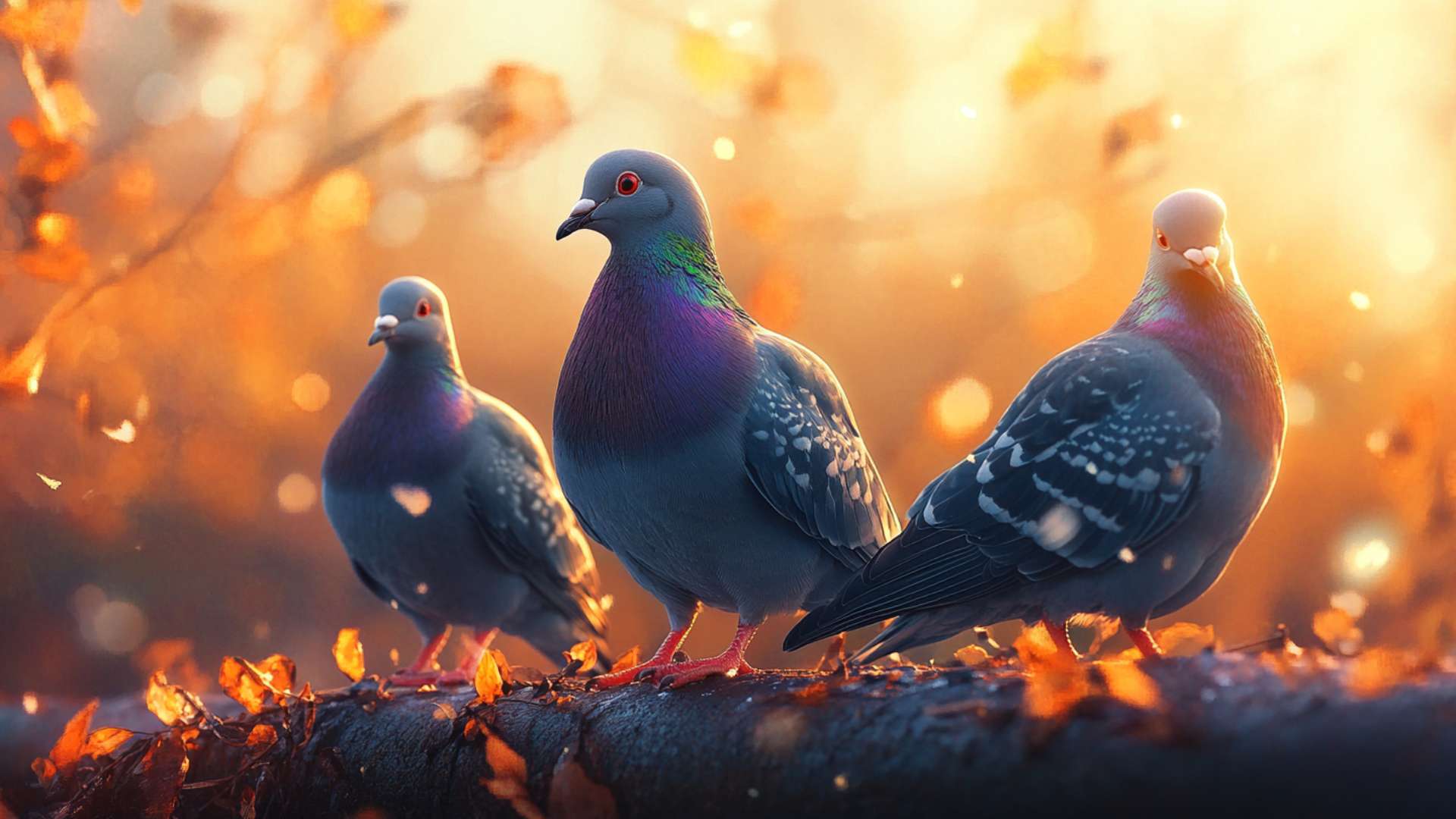
Pigeon Characteristics and Natural Habitat Preferences
Pigeons, those captivating birds that grace our cities and parks, are a diverse group of species known for their adaptability. With over 300 different types of pigeons worldwide, they come in various sizes and colors, from the common rock pigeon to the elegant racing pigeon.
Pigeons tend to thrive in urban environments where they have adapted to coexist with humans harmoniously. They possess strong wings enabling them to fly at speeds up to 50 miles per hour, making them skilled navigators across cities or through rural landscapes.
When it comes to their natural habitat preferences, pigeons often favor areas near water sources such as rivers, lakes, or coastal regions. These locations provide a good food source because of hydration and bathing opportunities for the birds.
Additionally, pigeons are known for seeking sheltered spots like ledges or tree branches where they can rest and roost safely. Their affinity for heights is undeniable; they see rooftops as an ideal perch from which they can survey their surroundings while remaining vigilant against potential threats.
Social Structure and Flock Dynamics

Pigeons are highly social creatures that thrive in flocks. Just as animals like humans form communities to find safety and companionship, pigeons also rely on numbers for protection against predators while maximizing their chances of finding food sources efficiently. Flocks can vary in size from a few dozen individuals up to several hundred birds depending on available resources.
Within these flocks, pigeons have a well-defined social structure. Dominant males establish territories that encompass feeding areas as well as potential nesting sites.
These territorial males attract mates by displaying elaborate courtship rituals involving puffed-up chests and impressive wing displays while cooing melodically. Females play an essential role in choosing a suitable mate based on their dominance and overall health.
Once a pair has formed, they work together to build a nest, usually made of twigs and foliage or other debris, in sheltered spots such as building ledges or trees. The female typically lays two eggs, which both parents take turns incubating.
After hatching, the young pigeons are cared for by their parents for several weeks until they become independent. Understanding the intricacies of pigeon behavior helps us create an environment that will attract these fascinating birds and provide them with what they need to thrive.
Let’s explore how we can entice pigeons into our spaces and witness their captivating presence up close. Stay tuned for the next section: Creating an Inviting Environment.
Creating an Inviting Environment
Providing ample food sources for pigeons
When it comes to feeding pigeons, offering a variety of grains, seeds, and fruits is key to attracting these delightful birds to your backyard. Pigeons have a diverse palate and are particularly fond of grains and plants such as cracked corn, wheat, and barley. You can easily find these at local pet stores or agricultural supply shops.
Another favorite among pigeons is sunflower seeds – both in-shell and hulled varieties of bird seed are eagerly devoured by these feathered visitors. To ensure a healthy diet for the pigeons, consider mixing different types of grains together in a dedicated pigeon feeder or scattering them on the ground near their roosting area.
Additionally, providing fresh fruits like cherries or blueberries can be a great treat for them to eat too. Remember to replenish the feeders regularly so that the birds know they can rely on your generous offerings.
Installing water sources for drinking and bathing

Fresh water is essential for attracting pigeons since they not only need it to drink but also use it for bathing. Having clean drinking water readily available will not only attract these birds but also ensure their well-being during hot summer days when finding clean water may become challenging. Creating a DIY bird bath or shallow container suitable for pigeons is relatively simple.
Find a sturdy surface like a ceramic bowl or shallow basin and fill it with fresh water up to approximately half an inch deep. Place the birdbath near their feeding area but make sure it’s in an open space where they can spot potential predators while taking a sip or cooling off with some splashing fun.
Remember that maintaining cleanliness is crucial as stagnant water may become breeding grounds for mosquitoes or other pests harmful to both humans and birds alike. Change the water regularly, ideally every day, ensuring you provide them with clean drinking and bathing options.
By providing a well-stocked buffet of grains, seeds, and fruits, as well as a refreshing water source, you’ll create an enticing environment to feed pigeons that attracts pigeons from near and far. It won’t take long before these feathered friends start flocking to your backyard to feast and enjoy a refreshing dip in the birdbath.
Designing Pigeon-Friendly Structures
Constructing Pigeon Roosts or Lofts
Pigeons, being social creatures, thrive in places where they can roost and nest comfortably. Constructing pigeon roosts or lofts in your garden or surrounding area can provide them with a safe haven to rest and breed.
When designing these structures, it’s crucial to consider ideal locations, dimensions, and materials that will attract pigeons. To create an attractive roost or loft, choose a spot that is elevated and away from potential disturbances.
Pigeons prefer heights as it allows them to keep an eye on their surroundings for any signs of danger. The dimensions of the structure should be spacious enough to accommodate multiple pigeons comfortably.
A rough estimate is around 18 inches in height, 24 inches in width, and 36 inches in length for each section. For materials, consider using wood or metal that can withstand various weather conditions.
Ensure the structure has proper ventilation to prevent heat build-up during hotter months. It’s also essential to install predator deterrents like netting or wire mesh around the roosts to protect the birds from potential threats.
Building Nesting Platforms or Ledges
Creating suitable nesting platforms or ledges is another way to attract pigeons and provide them with spaces for raising their young. These structures mimic natural cliff ledges where pigeons typically build their nests. When constructing nesting platforms, use sturdy materials like wood or concrete that can withstand the weight of pigeon nests.
The platform should have a slight incline towards the back to both prevent pigeons’ eggs from rolling off and provide stability for the nesting pair. To attract pigeons further, scatter small pieces of twigs and dry grass on top of the platform as building materials for their nests.
This gesture serves as an invitation for pigeons looking for suitable spots to lay their eggs. Offering sheltered spaces for shelter is also important, especially during extreme weather conditions.
Incorporate materials like branches or small shrubs around the nesting platforms to provide additional coverage and protection from wind or rain. By carefully designing pigeon-friendly structures that mimic their natural preferences, you create an environment that attracts and supports these magnificent birds in their daily activities.
Attracting Pigeons through Visual Cues
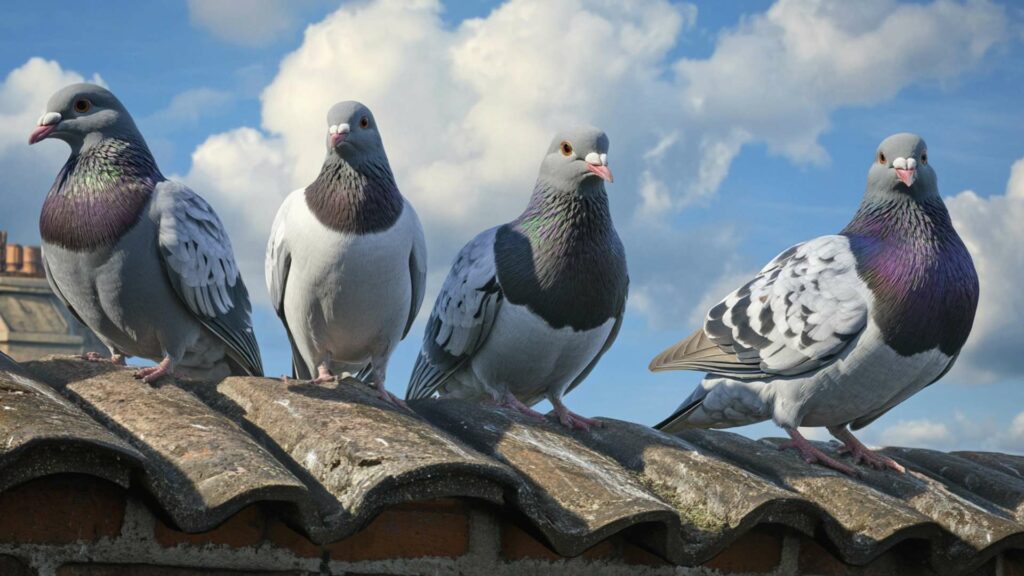
Using decoys or pigeon statues to signal a safe environment
One effective way to attract pigeons to your desired location is by utilizing decoys or pigeon statues. Pigeons are highly social birds and are more likely to be drawn to an environment that already appears occupied by their own kind.
Placing realistic-looking decoys or statues in strategic areas can create a sense of safety and belonging for wild pigeons. When using decoys, it is important to position them in areas where they can be easily seen by passing pigeons.
Placing them near feeding stations or perched on rooftops can help make the area appear more inviting and familiar for incoming birds. Decoys should also be regularly cleaned and maintained to ensure they appear natural and healthy, as sick-looking decoys may deter pigeons instead.
Incorporating reflective surfaces to catch their attention
Pigeons have an affinity for shiny objects, so incorporating reflective surfaces into your pigeon-attracting strategy can greatly enhance its effectiveness. Reflective materials such as mirrors, aluminum foil, or even CD discs can catch the sunlight and create flickering reflections that catch the attention of passing pigeons.
To maximize the impact of reflective surfaces, consider placing them strategically around areas where you want pigeons to frequent. For example, attaching strips of aluminum foil onto tree branches near bird feeders or nesting materials can create a shimmering effect that will surely capture the curious gaze of nearby pigeons.
It is important, however, not to overdo it with reflective surfaces as too much glare may discourage rather than attract these intelligent birds. By utilizing decoys and incorporating reflective surfaces in your efforts to attract pigeons, you are providing visual cues that signal a safe environment for them.
Remember that while these methods can be effective on their own, they work best when combined with other attractants such as food and water sources. With a thoughtful approach and some creativity, you can create an inviting space that will entice wild pigeons to visit and make themselves at home.
Regular Cleaning Routines to Ensure Hygiene
Creating a clean and tidy environment is crucial when it comes to attracting and keeping pigeons in your space. Pigeons, like any other living creature, appreciate cleanliness and thrive in habitats where hygiene is maintained. To ensure the well-being of these delightful birds, it’s essential to establish regular cleaning routines.
Start by regularly cleaning the areas where you provide food for the pigeons. Remove any leftover grains, seeds, or fruits that may have fallen to the ground.
This prevents pests from being attracted to your feeding area and helps maintain a healthy, hygienic environment for pet cats and pigeons to enjoy their meals. Additionally, make sure you clean up any pet food scattered around your yard as this can also attract pigeons.
Apart from food areas, pay attention to their roosting spots as well. Pigeon and bird droppings can accumulate over time and become unsightly or even pose health risks if left unattended.
Clean their roosts regularly with non-toxic disinfectants or mild soapy water. This ensures that parasites are kept at bay while maintaining a fresh environment for these beautiful birds.
Avoiding Sudden Disruptions That May Scare off the Pigeons
Pigeons are creatures of habit who appreciate stability and calmness in their surroundings. Therefore, it’s important to avoid sudden disruptions that may startle or frighten them away from your property. One key aspect to consider is noise control around their habitat.
Loud machinery or frequent loud noises near their roosting spots may cause distress and drive them away. If you’re planning construction work near your pigeon-friendly areas, try scheduling it during times when the birds are less active, or consider implementing sound barriers to minimize disturbance.
Another potential disruption is sudden movements around the pigeons’ feeding stations or nesting areas. Make sure to move cautiously and avoid making sudden gestures that may alarm or scare off these gentle birds.
By being mindful of your movements and maintaining a calm demeanor, you can create an environment where pigeons feel safe and comfortable. Remember, pigeons are intelligent creatures that can recognize human behavior patterns.
Keeping Pigeons Around
By treating their space with respect and minimizing disruptions, you’re more likely to establish a long-lasting bond with these wonderful feathered friends. Maintaining a welcoming atmosphere for pigeons involves regular cleaning routines to ensure hygiene and avoiding sudden disruptions that may scare them off.
Cleaning up food areas regularly not only prevents pests but also maintains cleanliness, which is essential for the well-being of the pigeons. Additionally, keeping their roosts clean helps prevent the accumulation of parasites while providing a fresh environment for them to rest comfortably.
Avoiding sudden noises or movements around their habitat helps create a calm and stable atmosphere where pigeons feel at ease. By implementing these practices, you can attract and enjoy the delightful presence of pigeons in your surroundings.
Observing and Enjoying the Pigeon Visitors
To truly appreciate the beauty and grace of pigeons, setting up observation points near their feeding areas is crucial. Find a comfortable spot where you can observe them without disturbing their natural behavior. Perhaps a cozy bench or a set of cushions placed strategically near their house will do the trick.
This way, you can relax and enjoy their presence while they go about their daily activities. Position yourself at an advantageous angle that allows you to witness various pigeon interactions.
Pigeons are highly social creatures, and observing their flock dynamics can be incredibly fascinating. From territorial disputes to playful courtships, there’s never a dull moment when pigeons gather.
Take note of their different behaviors, such as strutting around with puffed-up chests or engaging in lively chases for dominance. By immersing yourself in their world, you’ll gain a newfound appreciation for these remarkable birds. Documenting behaviors, interactions, and unique traits
As you sit back and observe these delightful creatures, keep your notebook or camera handy to document any noteworthy behaviors, interactions, or unique traits exhibited by the pigeons. You might notice certain individuals who possess distinctive plumage patterns or intriguing habits that set them apart from others in the flock.
Capturing these moments through photographs or detailed notes will allow you to reflect on them later. Record any interesting social dynamics that unfold among the pigeons – moments of camaraderie, affectionate preening sessions between mates, or even instances of altruism within the flock.
Note how they communicate with each other and other birds through coos and distinctive wing flapping displays that convey various messages. By documenting these observations over time, you’ll not only deepen your understanding of pigeon behavior but also contribute valuable insights to avian research and conservation efforts.
Conclusion
Attracting pigeons to your backyard and creating a harmonious environment for them can be a rewarding experience. By providing ample food, water, and suitable structures, you’ll not only attract these fascinating birds but also witness their captivating behaviors up close. Setting up observation points near their feeding areas allows you to immerse yourself in their world and document the unique characteristics of individual pigeons.
So why not embark on this delightful adventure? Through careful observation and documentation, you’ll gain a deeper appreciation for these remarkable creatures that grace our cities and landscapes.
Remember, when we take the time to understand and appreciate the natural world around us, it enriches our lives in ways we never thought possible. So go ahead – invite the pigeons into your world, observe their magic unfold before your eyes, and let nature’s wonders leave you with a sense of awe and wonderment.
Prevent Pigeon Intrusions with D-Termination: Las Vegas’ Leading Pest Control Solution!
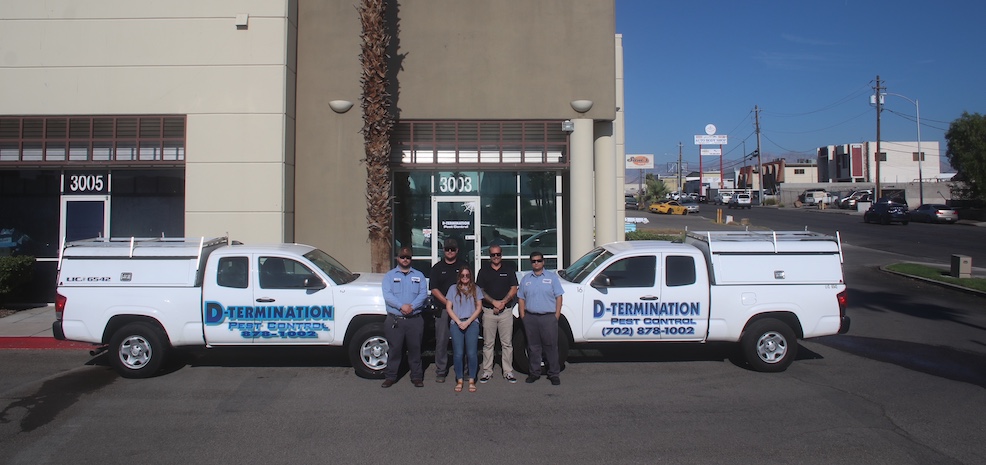
f you’re grappling with pigeon problems, D-Termination is your solution. Our team of experts excels in pigeon deterrence and the restoration of cleanliness and integrity to your surroundings. Bid farewell to pigeons by selecting D-Termination for highly effective pest control today!
Get in touch with us at 702-919-6310 or visit dtermination.com to arrange your pigeon control service and regain your space from these unwelcome pests.
Frequently Asked Questions:
You can lure pigeons with bird feed or birdseed.
You can call pigeons by making a cooing or whistling sound.
Pigeons are attracted to food scents, especially grains and seeds.
Pigeons favor grains and seeds, such as corn and peas, in their diet.

